Remember The Cassingle?
Here you will find the brief history of the cassingle, in graph form. Younger readers can probably just skip right over this one. [Via]
The Miami Heat Rewards Program For Valued Fans
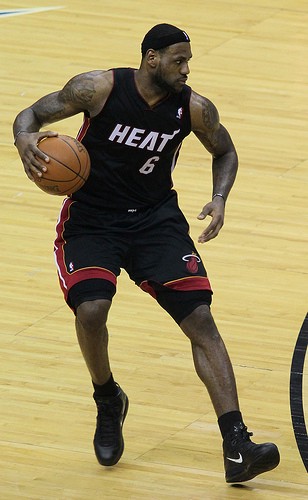
In financial circles, the Miami Heat making the NBA Finals is what could be considered a solid return on investment. When the team was cobbled together, an appearance in the NBA Finals seemed like its destiny. Then we saw them play and there appeared to be a chance that they might not even make past the first round of the playoffs. We bought into the Celtics, the Magic, the Bulls. (And by ‘we’ I mean ‘me’ and maybe you, too.)
Yet the NBA Finals, which begin tonight with the Dallas Mavericks looking to pull a “not so fast” on the Miami Heat, feature as much a “team of destiny” angle as has ever existed in the NBA: the league’s one true villain on its final stage, trying to stick its finger in the eye of naysayers; LeBron James, that paper-mâché Jordan (as everyone other than Kobe truly is), lugging his infamous baggage along on the road to immortality. The original storyline, drawn up by pundits back in October, would have had James tangling with Bryant tonight. Having the Dallas Mavericks awaiting him is a wrinkle in the plot, to say the least, and a wildcard in every sense. I’ve search and I can’t find one “expert” who chose the Mavericks to make it this far.
But maybe that’s fitting. The Mavericks are a multi-generational patchwork quilt of NBA talents. Peja Stojakovic and Jason Kidd are both two teams past their trademark squads and two seasons beyond their expected utility. Jason Terry, who still plays with the same enthusiasm he did as a member of the Hawks years ago, has discovered the fountain of youth. Shawn Marion is another nomad, who has played on several different teams (including the Heat and one in Canada, even!). Unfortunately for Dallas, he can offer no useful scouting; the Heat roster has been thoroughly overhauled in the season since he left. I can remember Tyson Chandler being labeled a bust, and a player prone to making boneheaded mistakes in big moments (not that his Chicago Bulls teams had many of them), but he has shed that label going forward. Add in JJ Barea, a player with a knack for weaving his way through the defense and infuriating his opponents. They are too good to be considered “rag-tag,” but it this were a movie, there’d be a fat kid and a pretty freckled girl on owner Mark Cuban’s payroll, too.
Nothing more need be said about Dirk Nowitzki’s play beyond this: he should win the postseason MVP award. He has always been a prolific scorer, but I can’t remember him attacking the rim with such ferocity, and I certainly don’t recall him demanding the ball on every possession. In this stellar postseason run, he’s also proven to be a deft passer and, here’s the shocker, an emotional leader. Five postseasons ago, when the Mavericks coughed up a 2 games-to-0 in the NBA Finals versus Dwyane Wade’s Heat, he appeared downright timid. In sports radio parlance, he choked. But these days he appears to have a swagger to go along with his giant mouthpiece.
If I’m Heat coach Eric Spoelstra, however, I put LeBron James on Nowitzki and that would be that; because if you do not have the quickness to evade James (a la Derrick Rose, who was only slightly effective at it) then you will be effectively marginalized, if not completely shut down. James has been playing that well, and Dirk will be unable to shoot over him. He had better hope that a steady diet of pick and rolls will wear James out or put him into foul trouble. (Neither scenario is comforting.)
Then I would put Wade on Terry, Mario Chalmers and Mike Miller on Barea and Kidd, Bosh on Chandler (dragging him away from the paint when the Heat is on offense) and Udonis Haslem on Marion. After that, it becomes a matter of who else in the Mavericks can step up. (My guess is Marion attempts to rediscover his dominant scoring ways of two teams ago.) The Heat’s defense was fearsome against the Bulls. And much of the Mavericks’ late-game success against the Thunder amounted to them waiting for many Awl readers’ favorite son, “Me First” Russell Westbrook, to stymie his own team’s momentum.
On offense, the Heat can create all kinds of match-up nightmares for the Mavericks. Who is going to be able to check James? Or Wade? Unlike the Thunder series, they can’t focus on denying the Heat duo the ball; those two run the entire offense. They will spread the floor and they will get to the rim, virtually at will. If Mike Miller, who will park in the corner, behind the arc, is shooting well, this may be the series where the Mavericks’ age and lack of speed will catch up to them.
So I guess this is my way of saying that I think the Heat are going to beat the Mavericks in 5 or 6 games. I hope I’m wrong. I want the Mavericks to shoot the lights out and for Lil JJ to create opportunities for his teammates, and for the Heat to run out of gas. And for Dallas to flip the script and become the team of destiny. Just thinking about it makes me feel all warm and fuzzy.
And yet I have trouble envisioning the Heat losing, especially after they are so close to what I’m sure to them feels like redemption after all the abuse that’s been heaped on them. Except it’s not really redemption. It’s more like a dividend for that loyal fan out there who may not have stuck with them through thick and thin, but did buy a t-shirt two months ago and has a really cool Heat screen saver on his iPad. In other words, as I said earlier, you can look at it as nothing more than a solid return on investment.
Tony Gervino is a New York City-based editor and writer obsessed with honing his bio to make him sound quirky. He can also be found here.
Photo by Keith Allison from Flickr.
Will Popular High School Gays Also Suffer Curse of Sad Later Lives?

With a gay couple named prom king and queen in Sanford, Maine, and an alleged lesbian-gay male prom king and queen pair at a charter school in Hialeah, FL, and a trans prom queen and gay male prom king in Davie, Florida, one must ask: are the kids actually alright? Well, probably. The downside is that, allegedly according to alleged students in Florida, their prom queen is allegedly kind of a gossipy meanie. But hey, that’s the very definition of equality, when mean girls can come in any stripe and connive their way to the most important and meaningful social position in high school! Don’t worry, young people. Everyone popular in high school gets her comeuppance later on. Wait till your 10th high school reunion, when all the popular people come back sad and poorly dressed and puffy-faced and grey.
Prince Philip's Greatest Hits and Blunders
“’A few years ago, everybody was saying we must have more leisure, everyone’s working too much. Now that everybody’s got more leisure time they are complaining they are unemployed. People don’t seem to make up their minds what they want.’ A man of the people shares insight into the recession that gripped Britain in 1981.”
— Prince Philip — the husband of the British monarch — is turning 90 in a few weeks, and so here are 90 of his most-famous off-color and off-putting remarks. (Some, however, are delightful.)
Berlusconi: The Beginning of the Middle of the End?
Close readers of this site will not find anything particularly new in this profile of Italian prime minister Silvio Berlusconi, but it is written by Ariel Levy, who is always a pleasure to read, so it is definitely worth your time. Enjoy! Meanwhile, back in Italy…
Gaddafi Sachs: When Bad Things Happen to Bad People

It’s the feel-good story of the morning: Goldman Sachs took $1.3 billion of Libya’s money in 2008 and promptly turned it into no money at all, according to the WSJ: “The $1.3 billion of option investments were hit especially hard. The underlying securities plunged in value and all of the trades lost money, according to an internal Goldman memo reviewed by the Journal. The memo said the investments were worth just $25.1 million as of February 2010 — a decline of 98%.” That is particularly delightful. And then, the panicked firm offered the foul government a number of chances to make their money back, but nothing ever came of it. On the plus side, they have so much money that they wouldn’t really notice the $1.3 billion disappearing into garbage investments — and meanwhile, many of the people mismanaging the money jumped ship for even-more profitable pastures when they saw the writing on the recession wall. Now much of Libya’s money, which is essentially stolen from its citizens, is frozen, and Army leaders are defecting while NATO bombs and baloney “truce” talks occur.
The Next Three Days
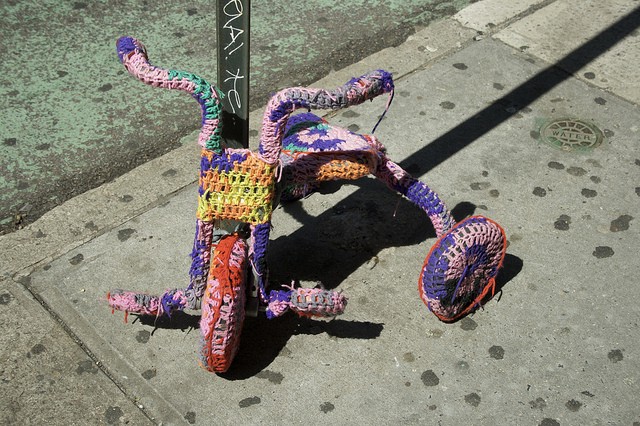
What are you doing this weekend? Drinking, sure. Maybe you will attend some kind of “barbecue” or “cookout” with “friends” or “family,” during which you will probably eat some charred animal flesh, unless you are a vegan, in which case you will stand there with an impossibly smug look on your face but will be secretly angry inside because all you’ve had to eat all day are chips and salsa and possibly carrots if they served some kind of vegetable platter. Maybe you’ll stay in and blast the A/C and watch six seasons of whatever show you always wanted to get into that is now streaming on Netflix. Maybe you’re sad and alone and you have no one to share the weekend with, in which case you’ll probably spend most of your time sleeping or crying. There is a world of possibilities out there! But know this for sure: Because the Internet has completely rewired your brain and jacked up the level of stimulus you now constantly require, there will come a point at which you are completely bored and want something to read, but you will not want to turn on your computer because it’s a three-day weekend and you feel like turning your computer says something bad about your ability to disconnect. Well, good news! Here are a few of the longer pieces we’ve run over the last six months or so. Print them out now and take them with you, wherever you go. When the urge strikes, pull ’em out and read ’em. It’ll be just like being online, without the guilty feeling that actually being online provides. Enjoy! And have as good a time as you can. It’s going to be Tuesday soon enough.
• Wikipedia And The Death Of The Expert
• My Two Days as a Russian Tabloid Sensation
• The Last Two Veterans of World War I
• Chris Kanyon’s Doomed Quest To Be Wrestling’s First Openly Gay Star
• Cannibals Seeking Same: A Visit To The Online World Of Flesh-Eaters
• Humanity’s Endless Quest to Invent a Death Ray: A History
• Our Desperate, 250-Year-Long Search for a Gender-Neutral Pronoun
• Gordon Likes to Think He is the Most Underrated of All Mythical Heroes
• A Q&A; With A Vacuum Cleaner Salesman
Photo by Niklas Hellerstedt, from Flickr.
Two Poems By Danielle Pafunda
by Mark Bibbins, Editor
Dear Mom and Dad,
In the culvert there are the bruised faces of elderberries and actual bruised faces and I have slipped from a limb wet and greased and fallen, hard along my left side. I have, you know, hit a man in the head with a rock when he was still a boy and bent so sickeningly I myself looked away. I have ridden a broken man up the sixty-foot banks, I have looped my bad tail around him. At the top we found some hair and condoms. We found some of your handwriting, or maybe it was boys’. We found her name scratched into the rocks if her name was indeed you sweet bitch. Or maybe, you sweat bitch. You bitch in the scuzzed out camp fire. You bitch seeing things projected over the fat, lank skin of trees. Oh. We bitches. Oh we see certain things. We trace over everything with a charred stick and in the morning and in the morning and in what passes for morning on an overcast day too cold to be an actual summer day, we see that all the tracings are of bodies and all the bodies fashionably contorted around one or the other of us. My long scarf gets caught in the mulberry tree. Mulberry, actually. There’s no such thing as the past, here. There aren’t any old-fashioned recipes, or any ideas about the hymen. We piss into a little china cup with England carved in the bottom. A little bluebell of a cup, tipped up, like so. I am tipped up, cupped, concave in places where there used to be someone — someone used to be in this place. What an empty pretty bag. What a pack of something used to be in there. And a bottle of. And an efficient blade. You cannot blame me for lying about the route we took. We took off our shoes when it got very slick and scuttled into the future. Oh, here we are. Oh, we are only one of us here, it’s getting dark, in the wrong time zone, it snowed today before the sun went down. I talked to your proxies. I talked myself bluing the rain of flies on my forearms as I hitched the screen, as the storm window tipped out in slow motion I saw it falling several stories and then I was on the street, the whole frame threatening to take me to saw, threatening to scratch and dust me. And then it didn’t, so on I walked,
Your Ugly Little,
Scab
Dear Mom and Dad,
I might as well ask you. Why does everyone come to my window and then ask me to put on a robe or just fuck off? Why does everyone start a band halfway through the hand job and run out to practice? Or, actually, why does everyone have some kind of car they want me to tumble into head first slightly concussed and laughing throatily all the way to the ravine? Why do all the boys I love climb up on the trestle that runs over the ravine and slink down to its catwalks and hold on infantile, lemur-like with all four limbs while the trains, only freight trains, rumble over? Why, in the ravine, do I never find anything shinier than a beer can and never get anyone out before the cops come? I think I can die and then there we are up against a train and I think, oh, it isn’t that easy after all. But I might as well ask you. Coded all these years as a boydigger, coded as a kissless dogface. They get so disappointed by my mustache. They get so angry when I make a joke or when I change the subject. They ask me if they can dig out all my blackheads. They have a hundred rules about how boring I am. I stay up the latest, you know. Out of all of them and all of you, I’m the last one with her lid laid open, a boiling beetsugar stew predawn premonition boiling over, a nosebleed. Or actually it’s just common sense. You’re going to jail and all of these boys are going to jail and all of these girls are jailed and all of these trains are going to jail, and if the trains even have conductors any longer also jail, and the rest of the town is basically jail and if you get into bed you get into jail and then there’s the morning it’s a penitentiary for you and yours,
Your Ugly Little,
Scab
Danielle Pafunda is author of Iatrogenic: Their Testimonies (Noemi Press), My Zorba(Bloof Books), Pretty Young Thing (Soft Skull Press), and the forthcoming Manhater (Dusie Press Books). She’s an assistant professor of gender & women’s studies and English at the University of Wyoming.
For more poetry, visit The Poetry Section’s vast archive. You may contact the editor at poems@theawl.com.
These Cars Turn Right! Become a Formula One Fan This Weekend
by Matt Langer
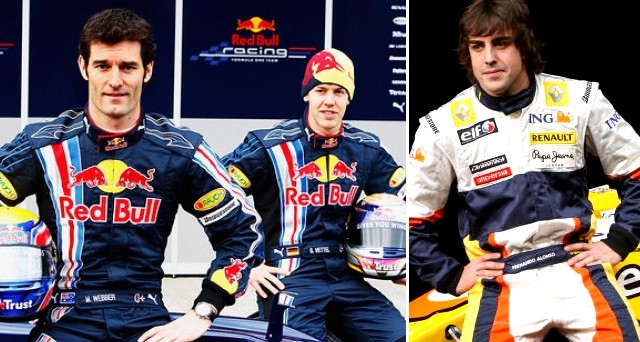
This weekend in Monaco, the world’s most elite drivers racing the world’s most technologically advanced cars will take on a harrowing and unforgiving circuit that winds its way through the narrow streets of Monte Carlo, punishing drivers with limited sight lines, frequent and drastic changes in direction, momentum, and elevation, and a claustrophobic track surrounded on all sides by massive steel guardrails that offer zero runoff room and zero room for error to those who stray from the racing line; it takes just one wrong twitch of a steering wheel to send a driver on a quick shunt into the wall and a long walk back to the paddock.
Meanwhile, this weekend here in the States marks the 100th anniversary of the Indianapolis 500, an event commonly referred to as “The Greatest Spectacle in Racing,” albeit a “spectacle” pretty well summed up by 33 drivers going around in circles and turning left 800 times. (Yawn!)
The Formula 1 Grand Prix of Monaco is also the most glamorous event in motorsports, set as it is in a principality that in addition to hosting the world’s wealthiest population is descended upon this weekend by a motorsports league boasting a $2 billion annual budget. Thriftier fans will offset the $1,000 ticket price with a modest $2,500/night hotel stay, while the wealthier sailor set will indulge in the weekend’s $30,000 (!!!) marina fee. The drivers even have their own informal contest of exorbitant wealth, competing each year to see who can arrive in the largest private yacht; several years back British sensation Jenson Button — never one to be outdone — chartered a decommissioned aircraft carrier to lay claim to the coveted prize.
Extravagance aside, though, Monaco has long been a place where history and heroes are made. Juan Manual Fangio won his very first race here in 1950 before going on to become the winningest F1 driver in history, a record he would hold until 2003. In 1984, in a downpour, a young Brazilian put himself on the F1 map in just his fourth Grand Prix ever: after starting thirteenth on the grid he showed a preternatural instinct for finding grip in even the harshest conditions, passing the great Niki Lauda for second by just the nineteenth lap, before hunting down race leader Alain Prost at a blinding four seconds a lap — very nearly overtaking him before the race was red flagged due to unpermitting conditions. His name was Ayrton Senna, and he and Prost would go on to be the only two winners of Monaco over the next decade, trading victories back and forth in the greatest rivalry F1 has ever seen. Ten years later Senna died at the 1994 San Marino Grand Prix, just a week before a Monaco Grand Prix where Michael Schumacher — the only man to best Juan Fangio’s 46-year record — would take the top step on the podium.
Such drama! And that’s why it’s long been a source of confusion for auto racing fans why Formula 1 never caught on in America, despite boasting the highest sporting audience internationally year after year (only the World Cup and the Olympics — both quadrennial events — beat F1 in viewership). More than half a billion people watch each F1 race, an audience fully five times that of the Super Bowl. Compared to Formula 1, the bloated payrolls of baseball teams look downright miserly: F1 teams have average annual budgets of $175m; one of them exceeds $400m. The highest paid driver nets an annual $42m in salary alone, 50% more than the much-derided $27m handed out each year by the New York Yankees to Alex Rodriguez.
And American readers will rightly be very confused by all of this, because over here we have our very own premier motorsports series — one as ignored by the rest of the world as theirs is here — featuring guys like Jeff Gordon, Dale Earnhardt Jr. and Tony Stewart, all of whom have become household names thanks to the furious rise in popularity NASCAR has experienced in recent decades. We’ve even got the Go Daddy Girl! But F1, despite numerous efforts, has just never made inroads with the American audience.
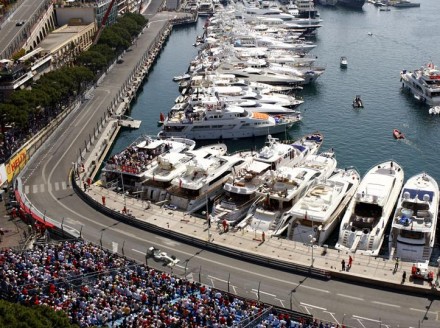
Explanations for this disparity have ranged from the more “spectator friendly” nature of American oval racing (be it the ability to see the entire track; the promise of more “competition” from similar cars running similar speeds on roomy tracks; the frequent yellow flag caution conditions that bunch up the pack and produce more lead changes), to the ruggedly individualistic appeal of NASCAR and its outlaw moonshining heritage, to the populist nature of a sport with comparatively low budgetary and athletic barriers to entry, to the consumeristic aspect of brand identification (“I’m a Dodge man!”, e.g.), to the American’s ingrained democratic opposition to a group of racers generally regarded the world over as royalty.
But for anyone (like me) who has a hard time getting excited about a bunch of dudes driving in circles for a few hours, well, good news! You too can wake up at 7:30 on Sunday morning to watch a Grand Prix! But fair warning: F1 is actually kind of hard to watch? But don’t give up! Because it only gets more rewarding the more you unravel its many (many) intricacies.
* * *
At first glance these vehicles seem so exotic that their only resemblance to an actual car is the four tires protruding from their aerodynamically tapered carbon fiber chassis. Even the season itself is kind of confusing, in which not one but two championships are at stake, one for the “constructors” (the people who build the cars), and another for the drivers (the people who, er, drive them). Then there’s the teams! Even the team names are tough to wrap your head around: don’t confuse Vodafone McLaren Mercedes with Mercedes GP Petronas F1!
But by far the most confusing thing for the entry-level F1 fan (though ultimately the most rewarding) is the jaw-dropping levels of technology powering these cars. Compared to the oval racing we’re familiar with here at home — where strict “stocks” exist to keep the cars running at more or less similar specifications (“spectator friendly,” remember) — the “formula” which governs engine and chassis design in F1 encourages feverish innovation and technological advances. And perhaps the most important of these when it comes to understanding modern F1 came at the hand of a British car designer named Colin Chapman.
Chapman’s first great achievement was the introduction of a rear-engine car in the 50s that offered drivers superior weight distribution to the traditional front-engine alternative (an advance at which the great Enzo Ferrari famously scoffed “But a horse does not push a cart!”), though his real coup came years later right here at the Monaco Grand Prix of 1968 with a car called the Lotus 49B.
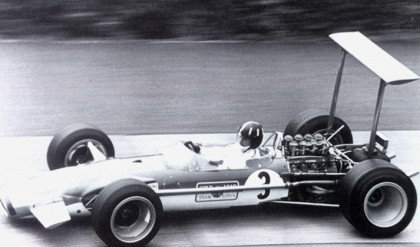
The 49B was the product of decades of research in automotive aerodynamics, research that culminated in the realization that drivers could turn a faster lap if they sacrificed top speeds on the straightaways for higher speeds through a track’s many corners. They accomplished this compromise with something called downforce, in which a car’s own speed was harnessed — in combination with clever aerodynamics — to literally press the tires down to the track with greater force than gravity alone could provide (a modern F1 car generates twice its weight in downforce; it could actually drive upside-down!). While top-line speeds may indeed have slowed, these cars offered increased traction which in turn increased cornering speeds which ultimately decreased overall lap times. The 49B was the first of its kind to sport the front and rear wings that are now the defining visual characteristics of today’s exotic F1 cars, featuring front fins and a massive rear spoiler that effectively turned the car into an airplane: when a driver is at speed the wings generate lift, just like on an airplane, only Chapman inverted that lift, sticking the car to the track and sending Graham Hill flying through Monte Carlo’s many corners to an easy victory in 1968.
And that’s what makes F1’s biggest difference from domestic oval racing so exciting: these cars turn right! (And also left!) But what’s more thrilling is that they do it a lot, and they do it really, really fast.
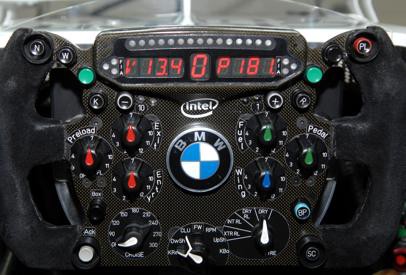
So fast, in fact, that drivers must be in top physical condition to withstand the battering they undergo in these cars: lap after lap a driver experiences g-forces comparable to an astronaut during launch (seriously!). Perhaps the best example of this comes at the Turkish Grand Prix in Istanbul, where drivers encounter the legendary quadruple-apex Turn 8 (translation: in racing, a driver will brake on his or her approach to a turn, swing wide before entering, then aim the nose towards the innermost spot in the turn before slamming down the accelerator and motoring out towards the wide side to make the fastest possible exit; that tight spot on the inside of a turn is the apex). Turkey’s Turn 8 is 600m long and drivers take it at 160mph, pulling 5.2 lateral gs for 8.5 seconds, all the while getting hammered by back-and-forth by positive and negative vertical g-forces as the car bounces over the turn’s bumpy washboard section before being promptly sucked back down on the track by the car’s downforce (compare: astronauts max out at around 3gs during launch). And F1 drivers do this 58 times a race, all while maintaining the necessary concentration to pilot the most advanced pieces of machinery on the road.
* * *
It’s the turns that explain the allure of Monaco, a circuit that takes all of F1’s high speeds and daunting corners and stuffs them inside two narrow steel barriers (it’s been said that racing at Monaco is like trying to conduct a symphony orchestra while having a knife fight in a phone booth).
An interview this week with the Mercedes team (the Petronas one, not the McLaren one) offered an illuminating glimpse at just what Monaco demands of a driver: throughout the course of a lap’s nineteen turns (twelve right, seven left, one criminally tight hairpin), drivers will make 130 steering adjustments, 55 gear changes, and about 20 knob twists and button presses on their ornate, futuristic steering wheels to manage things like K.E.R.S. (the Kinetic Energy Recovery System, a battery-charged power cell not dissimilar to hybrid technology that offers a temporary 80hp boost at the push of a button — just like a video game!) and D.R.S. (the Drag Reduction System, which allows drivers to lay the rear spoiler out flat and momentarily reduce downforce to increase straight line speeds). This means that over the course of a single one-minute and eighteen-second lap a driver makes over two hundred inputs on his car — and this doesn’t even count his work on the two pedals!
* * *
Tom Wolfe famously broke into journalism with a 1965 Esquire article on Junior Johnson, the last of the great bootleggers to race in the NASCAR series. He said this when comparing the various motorsports of the day:
The speeds [of NASCAR] are faster than those in the Indianapolis 500 race, the cars are more powerful and much heavier, and the drivers have more courage, more daring, more ruthlessness than Indianapolis or Grand Prix drivers. The prize money in Southern stock-car racing is far greater than that in Indianapolis-style or European Grand Prix racing, but few Indianapolis or Grand Prix drivers have the raw nerve required to succeed at it.
Wolfe was fantastically wrong, of course, but such is the state of affairs in the transatlantic motorsports divide: Europeans call NASCAR “hillbilly wrestling on wheels,” while NASCAR enthusiasts say things as comically off the mark as Wolfe’s words here. Because when it comes to courage and raw nerve, one need look no farther than Niki Lauda, a man who burned alive inside his Ferrari at the 1976 German Grand Prix before being removed at the last minute by fellow drivers coming to is aid; he promptly fell into a coma and suffered severe burns on his head in addition to permanent damage to his respiratory and circulatory systems from the toxic gases he inhaled during the inferno.
Lauda was back on the track six weeks later. “Fear is something you have to live with,” he said.
Matt Langer will join you Sunday at 7:30 a.m. Eastern Time in watching the Speed Network, and hopes to see you next year when F1 returns to the U.S. for the inaugural Grand Prix of the Americas in Austin, TX.
Dare2Share Worldview Characters, In Order Of Their Likelihood To Put Out
Dare2Share Worldview Characters, In Order Of Their Likelihood To Put Out
by Ned Frey

14. Jordan the Jehovah’s Witness
13. Marty the Mormon
12. Mo the Muslim
10. Jenna the Jew
Ned Frey (a k a MisterHippity) believes in listicles.
